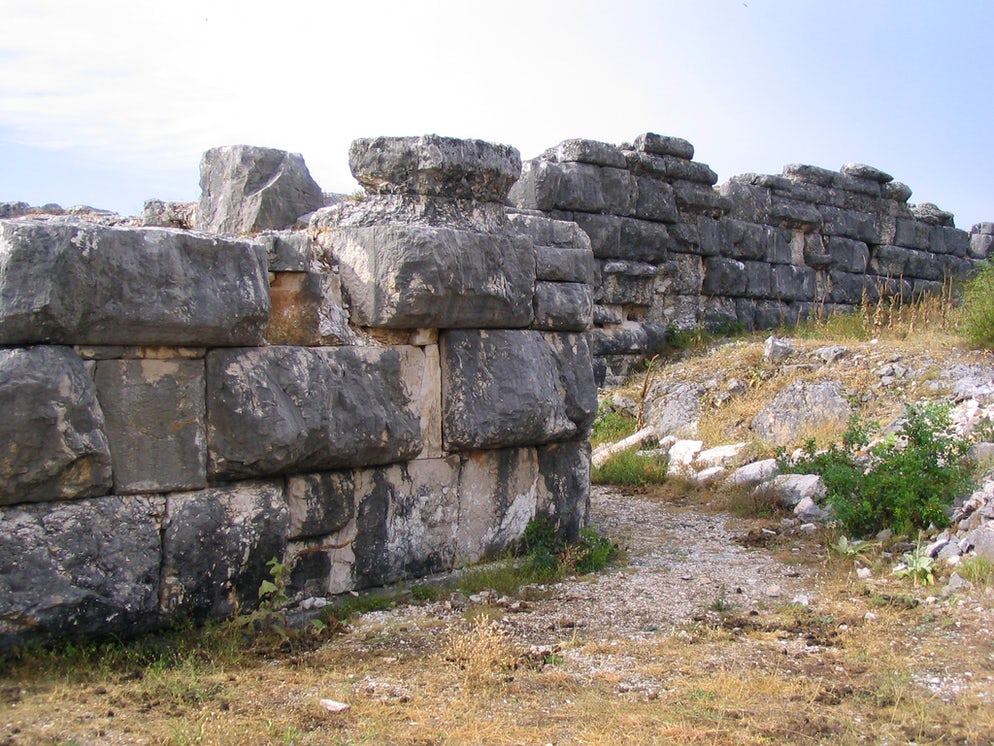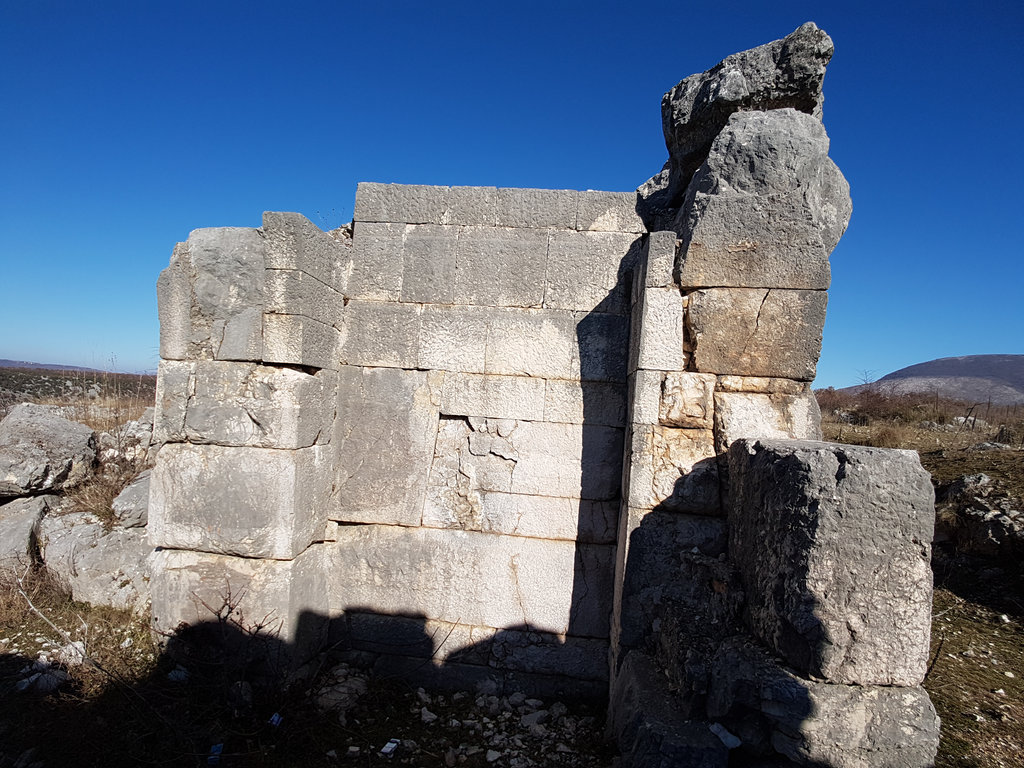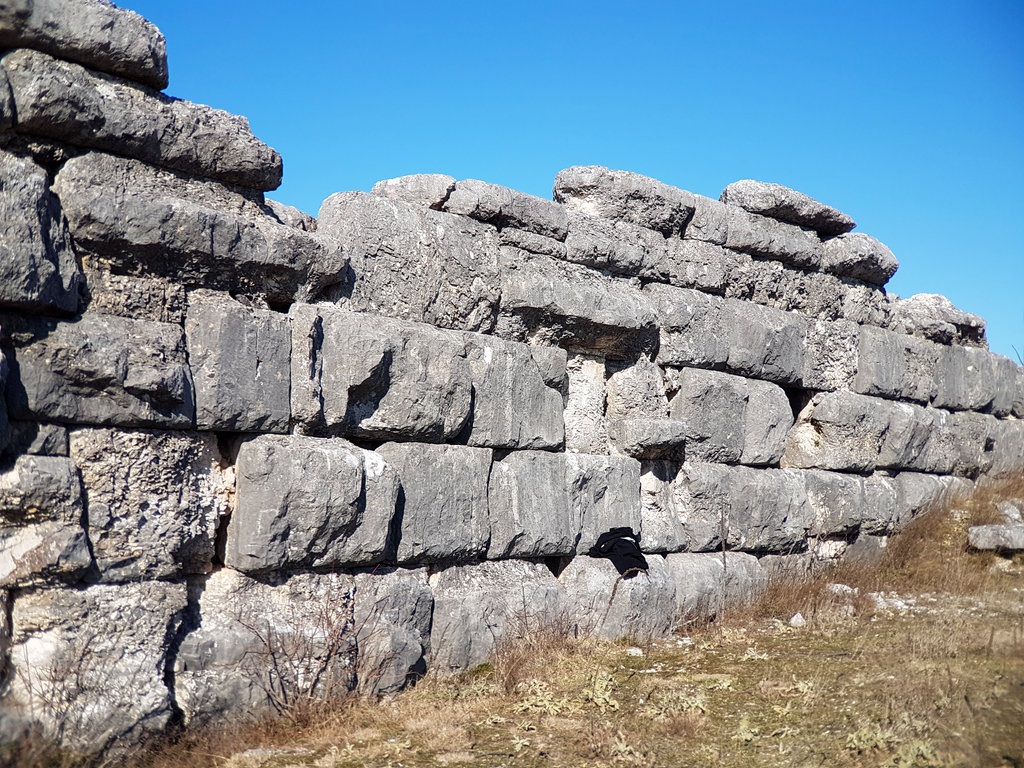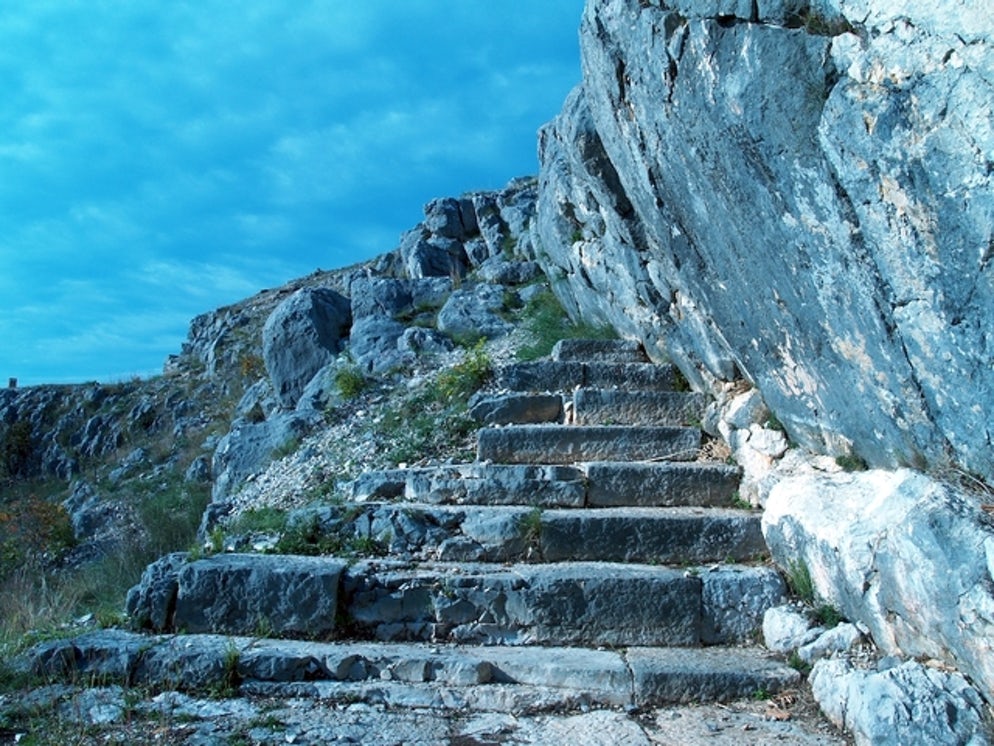Daorson

The remains of Daorson, the ancient capital of the Illyrian tribe called Daorsi, are located in Bosnia and Herzegovina, near the city of Stolac, precisely at Ošanjići.
The Daorsi settled and lived in the Neretva River between 300 BC and 50 BCE, and left this cyclopean wall which is incredibly similar to the many that can be found throughout the Mediterranean Area.
They also left a wide variety of artifacts and pottery, like amphorae, ceramic fragments, and a bronze helmet adorned with figures of the Greek gods, as well as granite sculptures of Cadmus and Harmonia.
From the bas reliefs on the remains, it’s clear how this tribe used the same iconography and had the same traditions that can be found throughout the ancient world and cultures, displaying common sacred symbols such as the snake and the eagle’s wings.
The cyclopean walls are similar to those in Mycenae, Greece, and served as a protection for the citadel or acropolis, that would have housed public, administrative, and religious buildings.
Besides the megalithic wall, no other structure was found at the site.
The megalithic wall was 65 meters long, 4.2 meters wide, and with a height ranging from 4.5 to 7.5 meters, with towers on the sides.
It is among the very few megalithic ruins of the Balkan area, and its attribution to the Daorsi can’t be confirmed.
As a matter of fact, Bosnia was inhabited by an organized civilization much earlier than the Illyrians, the Vinca culture.
They might be one of the oldest civilizations ever discovered, and their remains are quite enigmatic, as they left statues and symbols showing iconographies that are similar to those of ancient Mesopotamia, as well as a similar writing system.
This led researchers to speculations on a possible interaction between the two areas in remote times.




